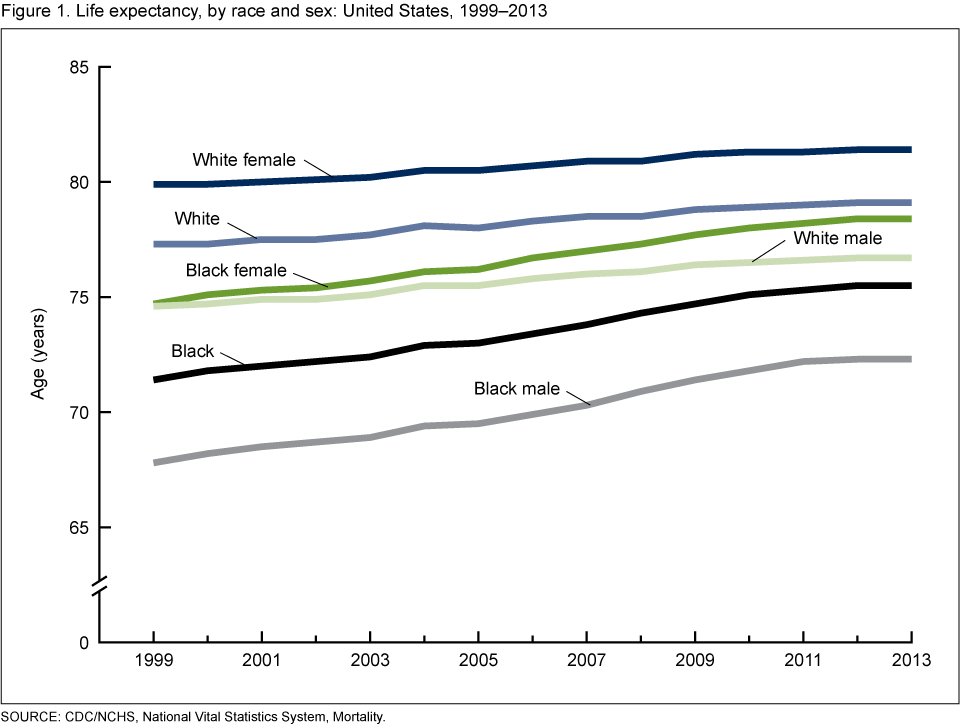Leading Causes of Death Contributing to Decrease in Life Expectancy Gap Between Black and White Populations: United States, 1999–2013
Posted on byThe trend in U.S. life expectancy since 1900 has been one of gradual improvement. Nevertheless, differences in life expectancy by race have persisted at least since official estimates were recorded.
In 1999, the difference in life expectancy between the white and black populations was 5.9 years. The gap decreased to 3.6 years in 2013.
A new NCHS report looks at black and white population differences in causes of death to determine how they contribute to the decrease in the gap in life expectancy from 1999 through 2013.
Key Findings from the Report:
- The gap in life expectancy between the black and white populations decreased 2.3 years between 1999 and 2013 (5.9 to 3.6 years).
- The decrease in the gap was due to larger decreases in death rates for the black population for heart disease, cancer, and HIV disease.
- The gap in life expectancy between black and white males decreased 2.4 years between 1999 and 2013 (6.8 to 4.4 years).
- The decrease in the gap was due to larger decreases in death rates for black males for HIV disease, cancer, and unintentional injuries.
- The gap in life expectancy between black and white females decreased 2.2 years between 1999 and 2013 (5.2 to 3.0 years).
- The decrease in the gap was due to larger decreases in death rates for black females for heart disease, HIV disease, and cancer.
Posted on by
Categories Uncategorized
Page last reviewed: November 6, 2015
Page last updated: November 6, 2015
Content source:
CDC, National Center for Health Statistics


